Potřebujeme váš souhlas k využití jednotlivých dat, aby se vám mimo jiné mohly ukazovat informace týkající se vašich zájmů. Souhlas udělíte kliknutím na tlačítko „OK“.
ASTM D7155-11
Standard Practice for Evaluating Compatibility of Mixtures of Turbine Lubricating Oils
Automaticky přeložený název:
Standardní praxe pro hodnocení Kompatibilita směsí turbín mazací oleje
NORMA vydána dne 1.10.2011
Informace o normě:
Označení normy: ASTM D7155-11
Poznámka: NEPLATNÁ
Datum vydání normy: 1.10.2011
Kód zboží: NS-37698
Počet stran: 6
Přibližná hmotnost: 18 g (0.04 liber)
Země: Americká technická norma
Kategorie: Technické normy ASTM
Kategorie - podobné normy:
Anotace textu normy ASTM D7155-11 :
Keywords:
compatibility, incompatibility, lubricant mixtures, lubricating oil, mixtures, ICS Number Code 75.100 (Lubricants, industrial oils and related products)
Doplňující informace
| Significance and Use | ||||||||||||||||||||||||||||||||||||||||||
|
The compatibility of oils can be important for users of oil-lubricated equipment. It is well known that the mixing of two oils can produce a substance markedly inferior to either of its constituent materials. One or more of the following can occur: A mixture of incompatible oils most often forms a precipitate. The precipitate will form unwanted deposits in the lubrication system, plug filters and oil passageways. Such events can lead to catastrophic equipment failures. Because of such occurrences, lubricant suppliers recommend evaluating compatibility of lubricating oil of different formulations and sources prior to mixing. Equipment users most often do not have the resources to evaluate oil compatibility and must rely on their suppliers. Mixing of oils is a highly imprudent practice without first determining the compatibility. Although new turbine oils may be compatible, in-service oil of the same type may be degraded or contaminated to such an extent that the new oil added may not be compatible with the system oil. In-service oil compatibility with new oil additions should be evaluated on a case by case basis. The oxidation resistance of different oils of the same type can vary widely, and compatibility does not imply equivalent performance. |
||||||||||||||||||||||||||||||||||||||||||
| 1. Scope | ||||||||||||||||||||||||||||||||||||||||||
|
1.1 This practice covers the compatibility of mixtures of turbine lubricating oils of the same ISO VG grade and type as defined by Specification D4304. The Tier 1 method compares the visual appearances of specific mixtures with those of the neat oils after storage at specified conditions. 1.2 If the current in-service oil is causing problems or if circumstances indicate the need for additional testing, a Tier 2 method compares selected performance properties of the mixture and its constituent oils. 1.3 The Tier 1 and Tier 2 methods can be used to evaluate new (unused) lubricant compatibility or the effects of adding new (unused) lubricant to in-service lubricant in the system. 1.4 This practice does not evaluate the wear prevention characteristics, load carrying capacity, or the mechanical shear stability of lubricants mixtures while in service. If anti-wear (AW), extreme pressure (EP), or shear stability are to be evaluated, further testing of these parameters may be required. 1.4.1 Tier 1—Mixtures of the two constituent oils to be evaluated are prepared at specified proportions, stored in an oven at 65°C for 168 h, and then evaluated for changes in physical appearance. 1.4.2 Tier 1—Mixtures of the two constituent oils to be evaluated are prepared at specified proportions, stored in an oven at 65°C for 168 h, and then evaluated for changes physical appearance and parameters detailed in 7.3. 1.5 Mixtures of the two constituent oils are evaluated in a primary testing protocol using the following standards:
1.5.1 For compatible mixtures, a supplemental (nonmandatory) testing scheme is suggested when circumstances indicate the need for additional testing the beyond Tier 2 primary recommended tests. Note 1—The oxidation stability test method should be selected based on the product type and in agreement with the lubricant supplier (see Appendix X2 for options). Unlike other tests described in this practice, the impact on oxidation stability may not be easily interpreted with a pass/fail rating. The user is encouraged to contact the lubricant supplier for assistance in the evaluation of the data. 1.6 Sequential or concurrent testing is continued until the test requestor or user is satisfied that the intent of this practice has been met. If any mixture fails the Tier 1 visual appearance method or any of the Tier 2 primary tests, when requested, the oils are incompatible. If all mixtures pass the Tier 1 or Tier 2 tests, the oils are considered compatible by those methods. 1.7 This practice applies only to lubricating oils having characteristics suitable for evaluation by the suggested test methods. If the scope of a specific test method limits testing to those oils within a specified range of properties, oils outside that range cannot be tested for compatibility by that test method. 1.8 This practice may be used to evaluate the compatibility of different types and grades of oil. However, it is not intended to evaluate such mixtures. The user is advised to consult with suppliers in these situations. 1.9 This practice does not purport to cover all test methods that could be employed. 1.10 The values stated in SI units are to be regarded as the standard. The values given in parentheses are for information only. 1.11 This standard does not purport to address all of the safety concerns, if any, associated with its use. It is the responsibility of the user of this standard to establish appropriate safety and health practices and determine the applicability of regulatory limitations prior to use. |
||||||||||||||||||||||||||||||||||||||||||
| 2. Referenced Documents | ||||||||||||||||||||||||||||||||||||||||||
|
Podobné normy:
Historická
1.7.2013
Historická
1.12.2011
Historická
1.9.2014
Historická
1.8.2011
Historická
15.9.2013
Historická
1.6.2007
Doporučujeme:
Aktualizace technických norem
Chcete mít jistotu, že používáte pouze platné technické normy?
Nabízíme Vám řešení, které Vám zajistí měsíční přehled o aktuálnosti norem, které používáte.
Chcete vědět více informací? Podívejte se na tuto stránku.


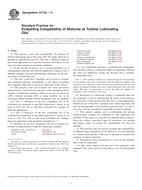
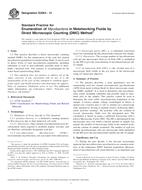 ASTM E2564-13
ASTM E2564-13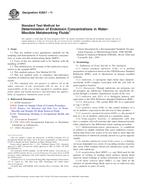 ASTM E2657-11
ASTM E2657-11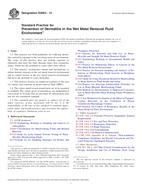 ASTM E2693-14
ASTM E2693-14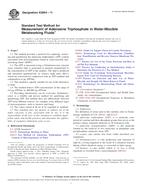 ASTM E2694-11
ASTM E2694-11 ASTM F2489-06(2013)..
ASTM F2489-06(2013).. ASTM F2661-07
ASTM F2661-07
 Cookies
Cookies
